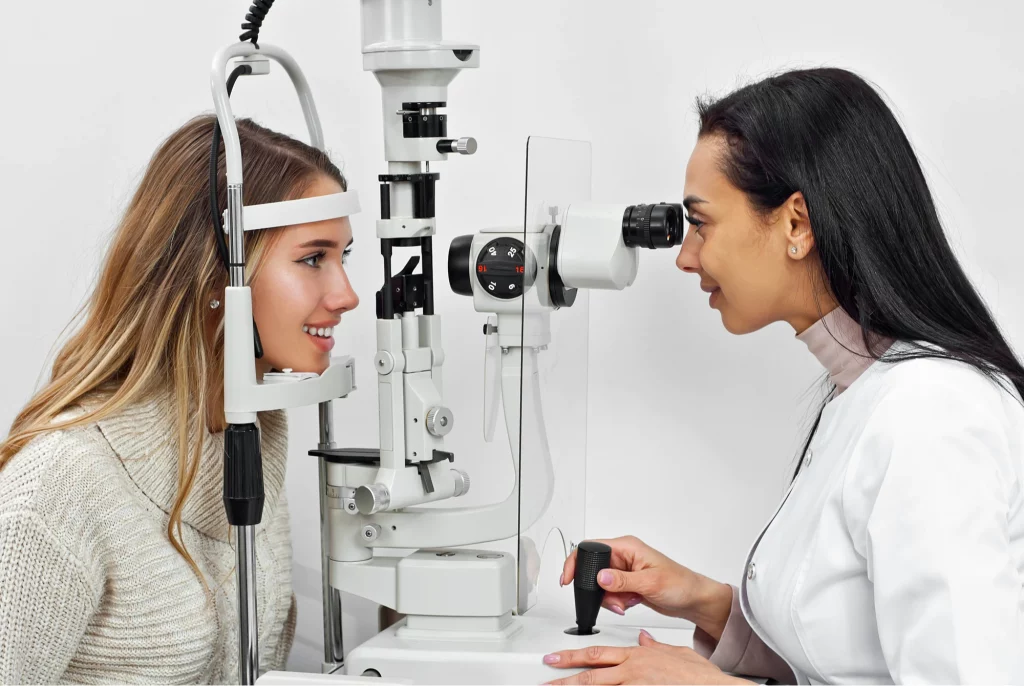Medically Reviewed by: Nicholas P. Bell, M.D.
The Different Types of Glaucoma Explained
While there are different types of glaucoma, it’s important to remember that each one is serious and can cause permanent and life-long damage to your vision. In some cases, glaucoma can even lead to blindness. So if you think you might be suffering from glaucoma, don’t take the risk of avoiding treatment.
Let’s take a few moments to cover the different types of glaucoma and different types of medical treatments available for glaucoma patients.
Open-Angle Glaucoma
Out of the many different types of glaucoma, open-angle glaucoma is the most common. Open-Angle Glaucoma is caused by improper drainage. More specifically, the drainage canals become clogged or blocked due to aqueous fluids moving too slowly out of the eye.
Over time, this buildup can increase eye pressure, damage the optic nerve, and negatively impact vision. Open-angle glaucoma can often go unnoticed, which is why it’s important to have routine eye exams.
Angle-Closure Glaucoma
Many patients come to us with the question, “What is the difference between open and closed-angle glaucoma?” Unlike open-angle glaucoma, angle-closure glaucoma (often referred to as closed-angle glaucoma) is rare, develops quickly, and is very noticeable. In other words, you should notice the symptoms fairly soon and realize you need to seek medical treatment.
Like open-angle glaucoma, this type of glaucoma is also caused by improper drainage, but there is a narrow angle where the iris meets the cornea (almost as if the cornea is closing). With angle-closure glaucoma, patients might suffer from additional symptoms, including nausea, blurred vision, and headaches.
If you’re in the process of seeking medical treatment, check out our articles regarding glaucoma treatment options and glaucoma surgery recovery.
Normal-Tension Glaucoma (NTG)
Normal-tension glaucoma is very similar to open-angle glaucoma; however, in this type of glaucoma, the pressure in your eye remains normal. While there is still research as to why this happens, many experts believe normal-tension glaucoma happens when other things are at play (such as a family history of glaucoma or a general sensitivity to normal pressure).
Secondary Glaucoma
Secondary glaucoma does not occur due to improper drainage. Instead, it is brought on by another eye problem. This “problem” can come in many different forms, with tumors, diabetes, and cataracts being the most common causes.
Have glaucoma and cataracts? Learn more about having glaucoma and cataract surgery at the same time.
Eye Center of Texas treats all types of glaucoma
If you notice symptoms of glaucoma or simply haven’t had your eyes checked in a while, call Eye Center of Texas. Glaucoma can become very serious if not diagnosed and treated quickly. Our experts can go over treatment options such as laser treatment for glaucoma and are happy to answer glaucoma FAQs.
Request an appointment online or call Eye Center of Texas today at 713-797-1010.
Other Helpful Articles by Eye Center of Texas:
Related Articles
Financing Options Available
Apply today to find a financing option that meets your needs.
Our Locations
Houston/Bellaire
6565 W. Loop S., Suite 650Bellaire, TX 77401
Medical Office:
713-797-1010
Medical Fax:
713-357-7276
LASIK/Near Vision:
Office: 713-395-1515
Fax: 713-357-7278
Pasadena
4415 Crenshaw RoadPasadena, TX 77504
Medical Office:
281-977-8800
Medical Fax:
281-977-8877
Sugar Land
15200 S.W. Freeway, Suite 130Sugar Land, TX 77478
Medical Office:
281-277-1010
Medical Fax:
281-277-4504
Clear Lake
455 E. Medical Center Blvd., Suite 110Webster, TX 77598
Medical Office:
281-332-1397
Medical Fax:
281-282-9152
Katy
Greenhouse Medical Plaza2051 Greenhouse Road, Suite 110
Houston, TX 77084
Medical Office:
346-547-7070
Medical Fax:
281-214-2971
The Woodlands/Conroe
100 Medical Center Blvd., Suite 118Conroe, TX 77304
Medical Office:
936-647-1610
Medical Fax:
936-647-1620


